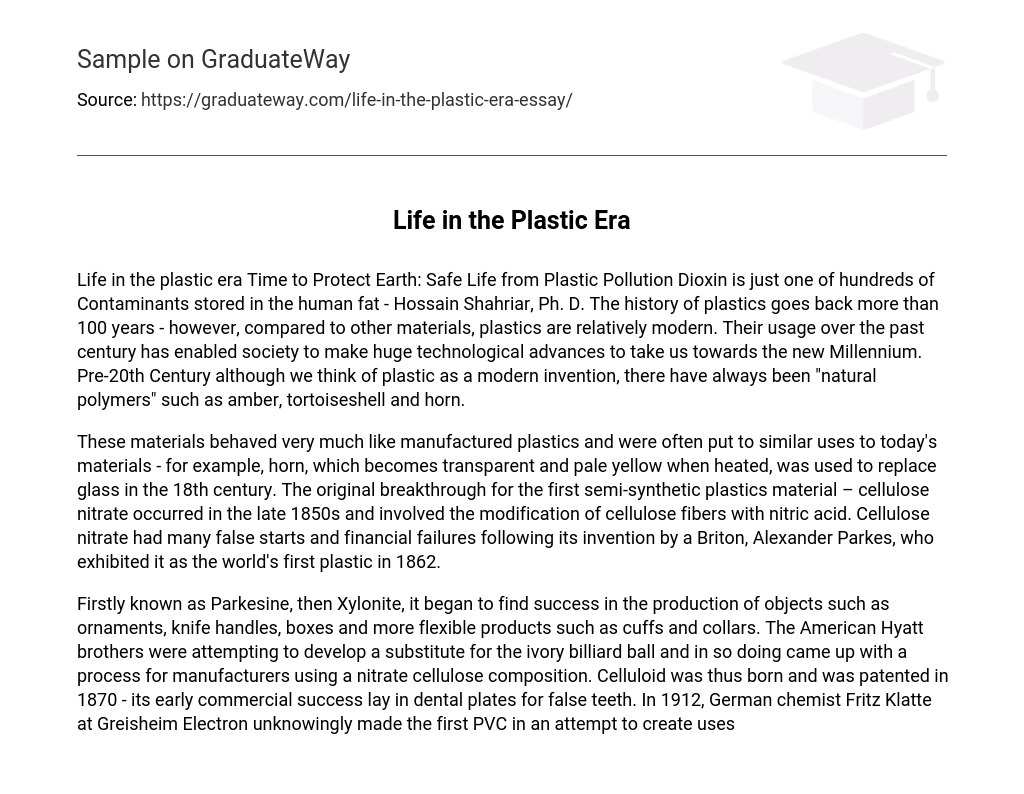Dioxin is just one of hundreds of Contaminants stored in the human fat – Hossain Shahriar, Ph. D. The history of plastics goes back more than 100 years – however, compared to other materials, plastics are relatively modern. Their usage over the past century has enabled society to make huge technological advances to take us towards the new Millennium. Pre-20th Century although we think of plastic as a modern invention, there have always been “natural polymers” such as amber, tortoiseshell and horn.
These materials behaved very much like manufactured plastics and were often put to similar uses to today’s materials – for example, horn, which becomes transparent and pale yellow when heated, was used to replace glass in the 18th century. The original breakthrough for the first semi-synthetic plastics material – cellulose nitrate occurred in the late 1850s and involved the modification of cellulose fibers with nitric acid. Cellulose nitrate had many false starts and financial failures following its invention by a Briton, Alexander Parkes, who exhibited it as the world’s first plastic in 1862.
Firstly known as Parkesine, then Xylonite, it began to find success in the production of objects such as ornaments, knife handles, boxes and more flexible products such as cuffs and collars. The American Hyatt brothers were attempting to develop a substitute for the ivory billiard ball and in so doing came up with a process for manufacturers using a nitrate cellulose composition. Celluloid was thus born and was patented in 1870 – its early commercial success lay in dental plates for false teeth.





